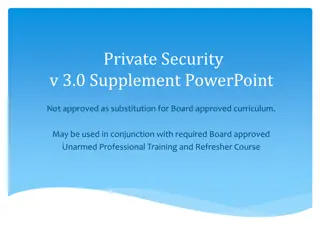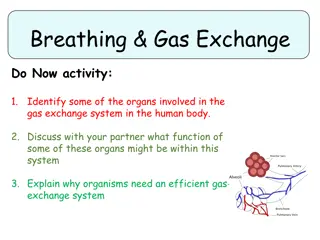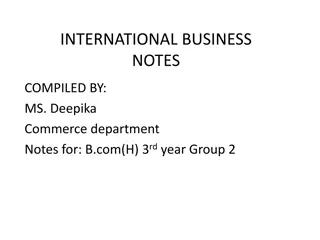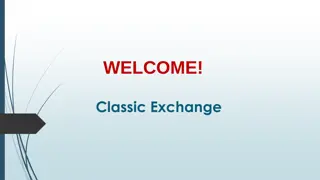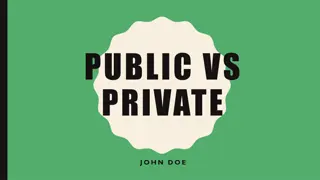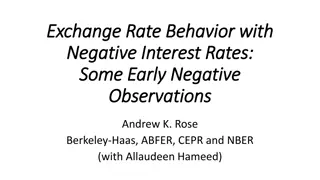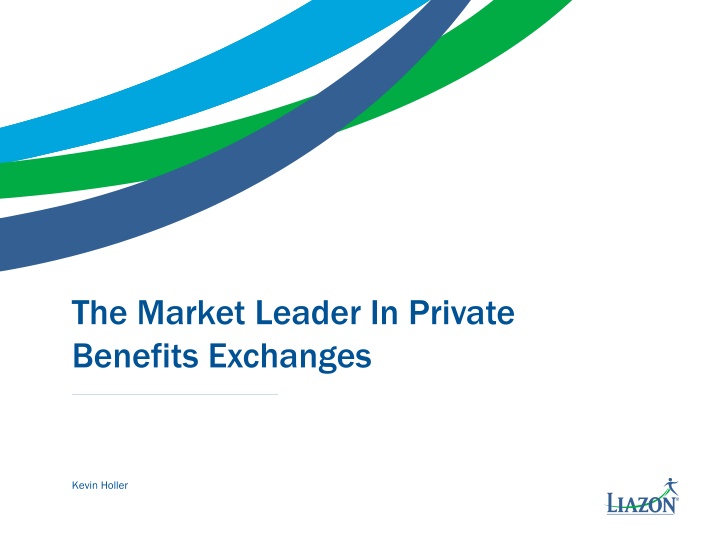
Private Benefits Exchanges and Employee Benefits Trends
Learn about private benefits exchanges, the rising costs of healthcare coverage, and the benefits of defined contribution models. Discover how companies like Liazon are leading the way in providing employees with customizable benefit options for greater satisfaction and financial control.
Download Presentation

Please find below an Image/Link to download the presentation.
The content on the website is provided AS IS for your information and personal use only. It may not be sold, licensed, or shared on other websites without obtaining consent from the author. If you encounter any issues during the download, it is possible that the publisher has removed the file from their server.
You are allowed to download the files provided on this website for personal or commercial use, subject to the condition that they are used lawfully. All files are the property of their respective owners.
The content on the website is provided AS IS for your information and personal use only. It may not be sold, licensed, or shared on other websites without obtaining consent from the author.
E N D
Presentation Transcript
The Market Leader In Private Benefits Exchanges Kevin Holler
Company overview Liazon is the market leader in private exchanges 8 years of market experience 700+ broker partners, including 8 of the top 10 This was not only a smart business decision, it has given our employees greater satisfaction and peace of mind than we could have envisioned. 60+ medical and ancillary providers 960+ clients* Award-winning technology - Bill Wagner, CFO Acquired by Towers Watson in November 2013 2 *As of January 2015
Lets Define Private exchange An online marketplace or store where employees shop for benefits that fit their needs often using money given to them by their employer (defined contribution) 3
The cost of health care coverage is escalating at astronomical rates Employees contribute 40% more and employers contribute 34% more to health benefits than they both did five years ago1 Health insurance costs have increased double the rate of inflation1 Did you know? 80% of companies offer their employees only one choice when it comes to health care coverage, yet most employees would be willing to pay a larger share of their health insurance premium if they had the opportunity to tailor benefits to their needs2 1 17th Annual Towers Watson/National Business Group on Health Employer Survey on Purchasing Value in Health Care, Towers Watson, 2012. 2 Let Them Have Choice: Gains from Shifting away from Employer-Sponsored Health Insurance and toward Individual Exchange, Dafny, Ho, Varela, July 2011. 4
Our model (1) Defined Contribution: Employer give employees money Stop picking people s plans Gain financial predictability and control (2) Private Exchange: People go shopping! Big benefits store Technology combines products to yield better, more personalized coverage Personal recommendations based on individual needs and live support Employer role in benefits becomes more like 401k program 6
The Store is stocked with carefully curated products Protection Health Medical Accident Life Disability (LTD and STD) Legal Services ID Theft Protection Pet Insurance Critical Illness Hospital Indemnity Dental Vision Wellness Telemedicine Lifestyle Money HSA FSA Personal Time Off (PTO) Buy-Up 7
Our decision support model We provide a robust decision support tools to make it easy for individuals and families to select a benefits portfolio with the coverage they actually need. Recommendation Recommendation Engine Engine Uses sophisticated statistical modeling to predict the right combination of plans Insurance Education Insurance Education Contains accessible education about insurance and articles, videos and FAQs Plan Summaries Plan Summaries Displays key components of plans simply and without insurance jargon. Plan Comparison Plan Comparison Tools Tools Produce a side-by-side comparison of key coverages, plan features and costs 8
Our recommendation engine EMPLOYEE INPUT EMPLOYEE INPUT HEALTH & FINANCIAL CONCERNS HEALTHCARE CONSUMERISM NETWORK PREFERENCES RISK HEALTH STATUS SAVINGS EXPECTED UTILIZATION INCOME TOLERANCE H E A L T H H E A L T H F I N A N C E S F I N A N C E S P E R S O N A L I T Y P E R S O N A L I T Y HEALTHCARE COSTS & UTILIZATION S T A T I S T I C A L M O D E L I N G S T A T I S T I C A L M O D E L I N G A sophisticated A sophisticatedalgorithm creates a Recommendation Types of plans that match people s specific needs and wants A cost that balances premiums with expected out-of-pocket expenses algorithm creates a Recommendationconsidering: considering: A match to physician network preferences and overall desires and concerns PUBLIC DATA PUBLIC DATA
Pinpointing a specific recommendation Alicia Tom Chris & Family Cost is $675 (includes her monthly metro card) Cost is $550 Cost is $1,300 HMO HDHP POS LONG-TERM DISABILITY HEALTH PLAN (Copay) HEALTH PLAN HEALTH PLAN 10
Takeaways from 7 years and hundreds of thousands of enrollments 100% buy a different benefits package ~80% buy a different health insurance plan Most buy something cheaper People rarely cluster into one or two plans ~70% Dental Insurance Even distribution across plans ~70% Disability Insurance (40% STD; 45% LTD) ~50% HSA-qualified plans ~50% Vision Insurance ~40% Life Insurance Dramatic increases in policy amount ~30% Supplemental Health Insurance (accident, CI, hospital) ~15% Pet, Telemedicine, Legal, Wellness, etc. In Year 2, 65% remain the same, 25% evolve, 10% make radical changes 12
Employees and employers are happy Employees Employees Employers Employers Are happy Are happy 79% 79% Control costs Control costs 83% 83% of employees are satisfied with the shopping and enrollment experience have seen spending hold or drop Better value the $s their employer spends Better value the $s their employer spends on their benefits on their benefits 74% 74% contribution to their benefits Streamline their benefits administration Streamline their benefits administration 7 73% 3% administration, despite offering drastically more benefits options say they ve streamlined benefits are more aware of their employer s Appreciate choice Appreciate choice Only Only 2% 2% Enjoy the experience! Enjoy the experience! 81% 81% were glad they switched! preferred letting their employer choose their benefits for them The interface is easy to use...It is very useful to us as an employer to be able to control our contribution each year and employees look at the choices as an added benefit. C Client Very descriptive, simple, and quick. Everything you need in choosing your coverage!" Employee Employee lient Source: Liazon employer & employee survey, 2014. 13
Discussion and Next Steps... First make a conceptual decision on the private exchange model by thinking about the following questions... Do we believe that people should buy their own benefits and not companies for them? Do we believe in the 4 core concepts of DC, Choice, Employee Empowerment, Technology What are the biggest obstacles and challenges that we foresee? What value will this bring to our organization and people? Next Steps: Defined Contribution modeling Obtain carrier quotes and store modeling Executive buy-in Technical Review Meeting Review Implementation timelines and requirements Create a communication and education plan

